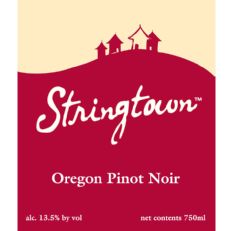Sign In Chef

By using our free meal planner (and the rest of spoonacular.com) you have to agree that you and only you are responsible for anything that happens to you because of something you have read on this site or have bought/cooked/eaten because of this site. After all, the only person who controls what you put in your mouth is you, right?
Spoonacular is a recipe search engine that sources recipes from across the web. We do our best to find recipes suitable for many diets — whether vegetarian, vegan, gluten free, dairy free, etc. — but we cannot guarantee that a recipe's ingredients are safe for your diet. Always read ingredient lists from the original source (follow the link from the "Instructions" field) in case an ingredient has been incorrectly extracted from the original source or has been labeled incorrectly in any way. Moreover, it is important that you always read the labels on every product you buy to see if the product could cause an allergic reaction or if it conflicts with your personal or religious beliefs. If you are still not sure after reading the label, contact the manufacturer.
We also attempt to estimate the cost and calculate the nutritional information for the recipes found on our site. Again, we cannot guarantee the accuracy of this information. Additionally, our nutrition visualizer that suggests that you limit sodium, sugar, etc., and get enough protein, vitamins, and minerals is not intended as medical advice. Similarly, our health tips are based on articles we have read from various sources across the web, and are not based on any medical training. The team behind spoonacular does not possess any medical qualifications and the information may be found to be incorrect or out of date based on future research. If you need help planning your diet or determining which foods (and recipes) are safe for you, contact a registered dietitian, allergist, or another medical professional.
Spoonacular is not responsible for any adverse effects or damages that occur because of your use of the website or any information it provides (e.g. after cooking/consuming a recipe on spoonacular.com or on any of the sites we link to, after reading information from articles or shared via social media, etc.)
×$5.44 per serving

1 likes

Ready in 30 minutes

Spoonacular Score: 77%
Need a gluten free and pescatarian main course? Salmon With Orange Salsan and Pomegranate Glaze could be a great recipe to try. One serving contains 678 calories, 38g of protein, and 35g of fat. This recipe serves 6 and costs $5.44 per serving. 1 person were glad they tried this recipe. A mixture of salmon, kosher salt, serrano pepper, and a handful of other ingredients are all it takes to make this recipe so flavorful. This recipe is typical of Mexican cuisine. From preparation to the plate, this recipe takes roughly 30 minutes. It is brought to you by Foodista. Taking all factors into account, this recipe earns a spoonacular score of 79%, which is solid. If you like this recipe, take a look at these similar recipes: Salmon With Pomegranate and Orange Salsa, Pomegranate Orange Salsa, and Pomegranate-Orange Salsa.
Fish on the menu? Try pairing with Pinot Noir, Pinot Grigio, and Gruener Veltliner. Fish is as diverse as wine, so it's hard to pick wines that go with every fish. A crisp white wine, such as a pinot grigio or Grüner Veltliner, will suit any delicately flavored white fish. Meaty, strongly flavored fish such as salmon and tuna can even handle a light red wine, such as a pinot noir. You could try Stringtown Pinot Noir. Reviewers quite like it with a 4.8 out of 5 star rating and a price of about 17 dollars per bottle.
 With expressive cherry and red berry fruit on the nose and a soft, supple palate, rounded off by sweet, spicy and complex oak notes, this fruit-driven Pinot Noir features just the right balance of acidity and delicate tannins to finish clean yet vibrant.
With expressive cherry and red berry fruit on the nose and a soft, supple palate, rounded off by sweet, spicy and complex oak notes, this fruit-driven Pinot Noir features just the right balance of acidity and delicate tannins to finish clean yet vibrant.
» Get this wine on Wine.com






















































Read the detailed instructions on Foodista.com – The Cooking Encyclopedia Everyone Can Edit